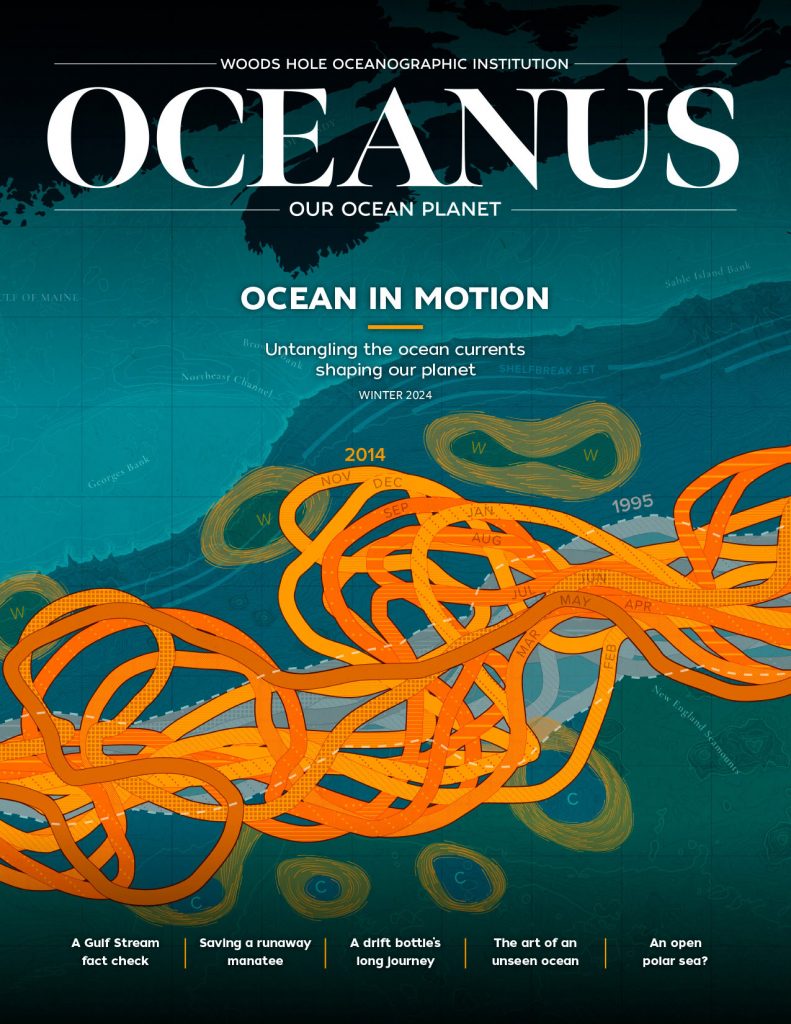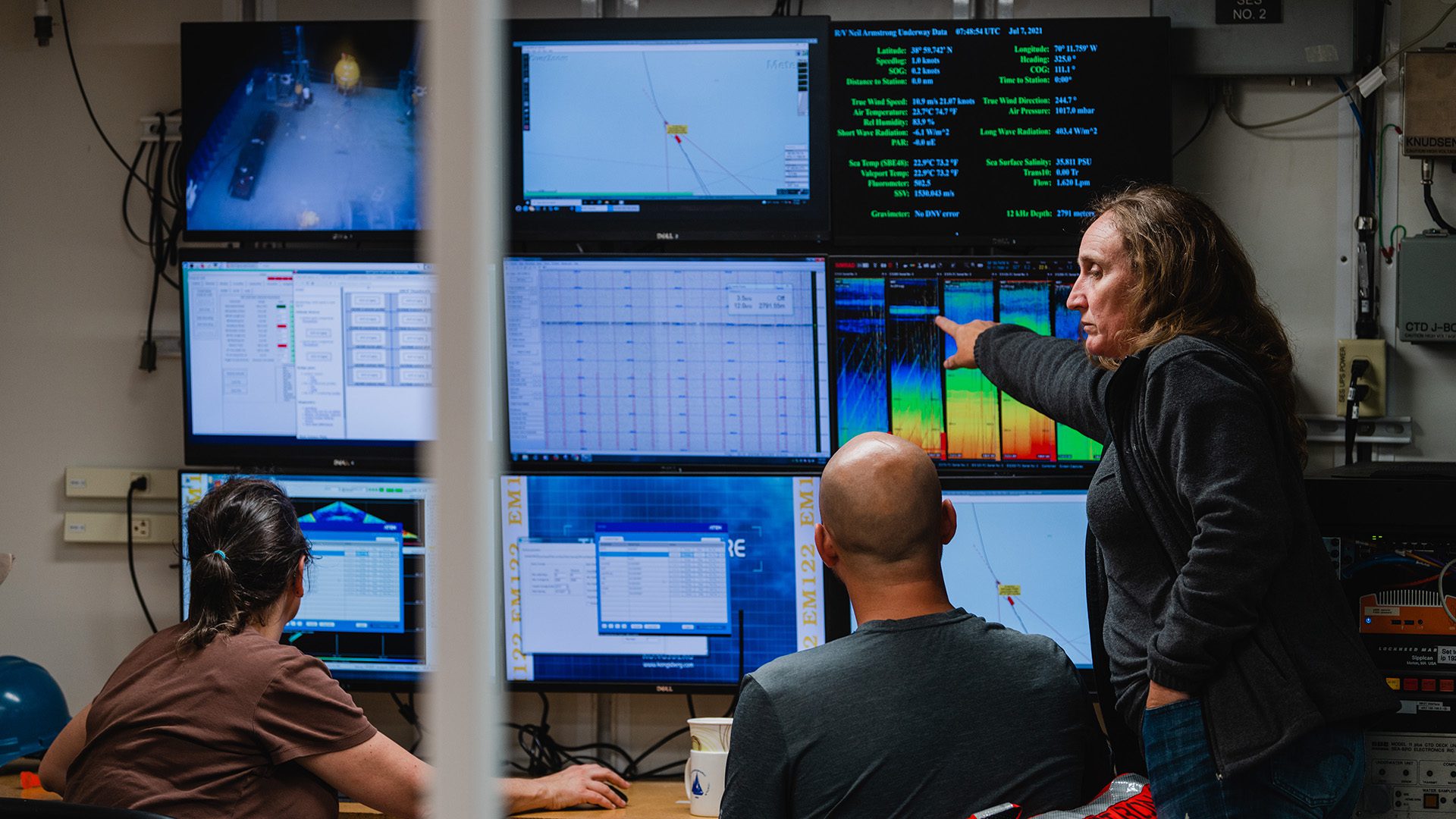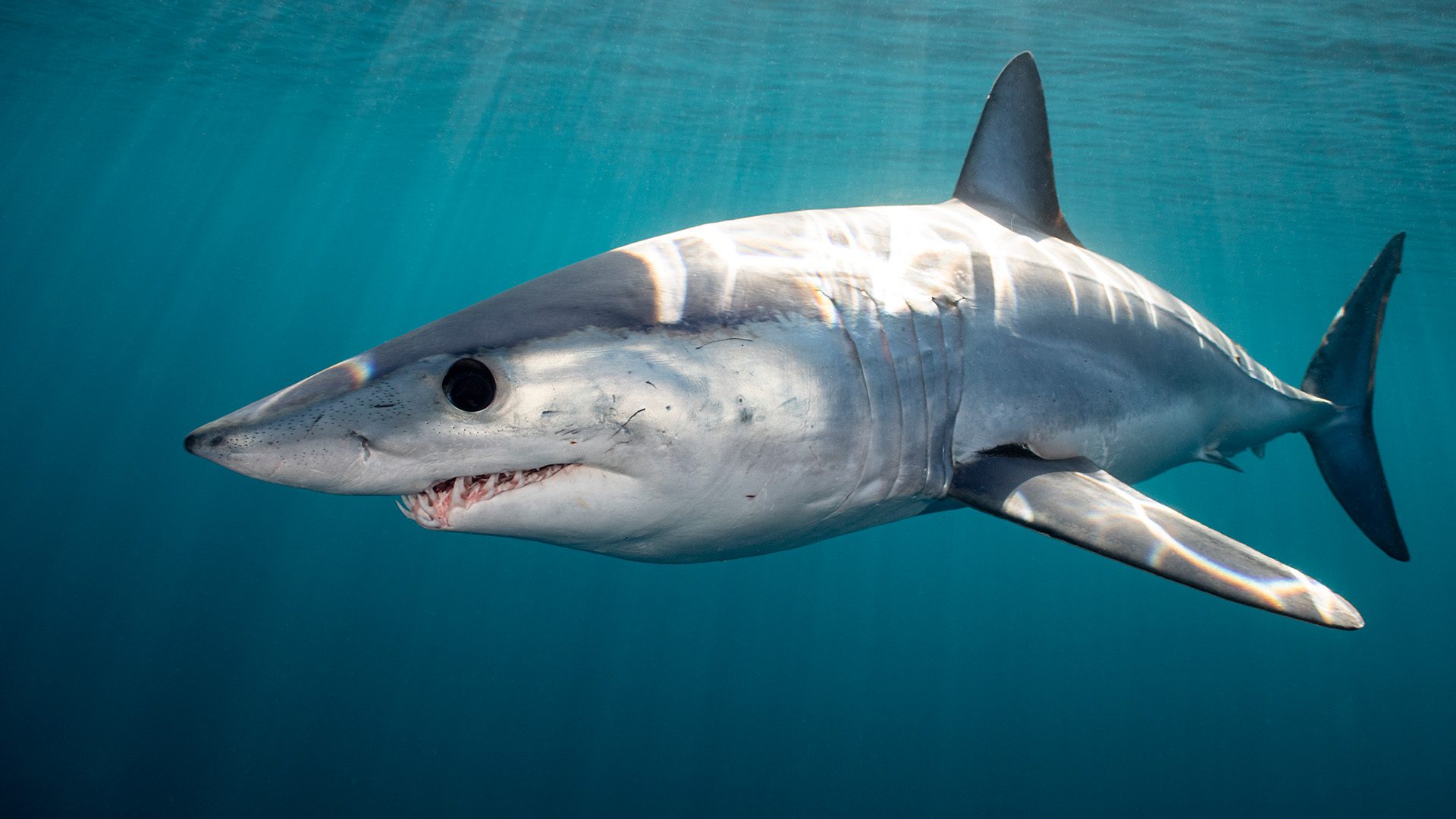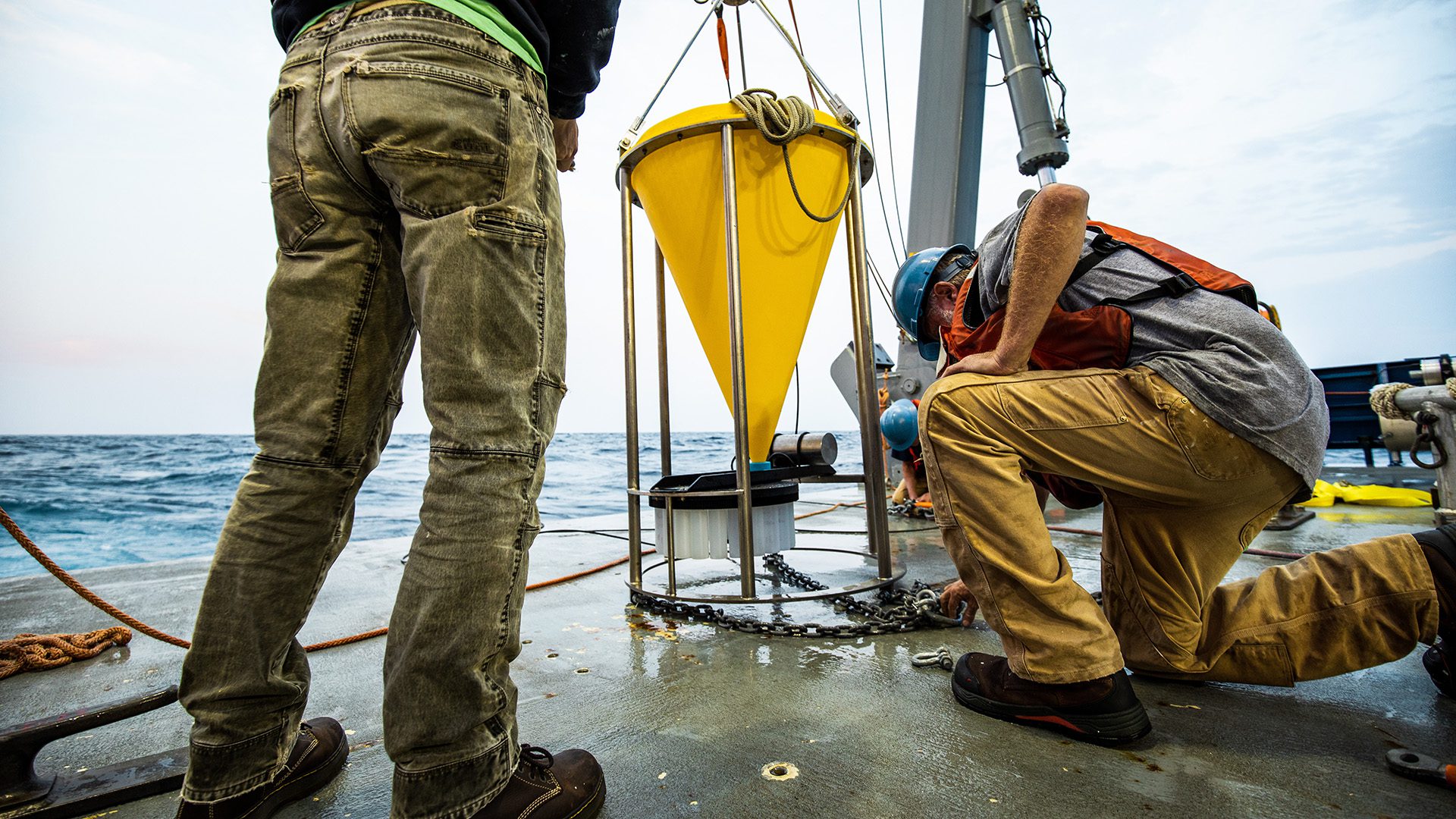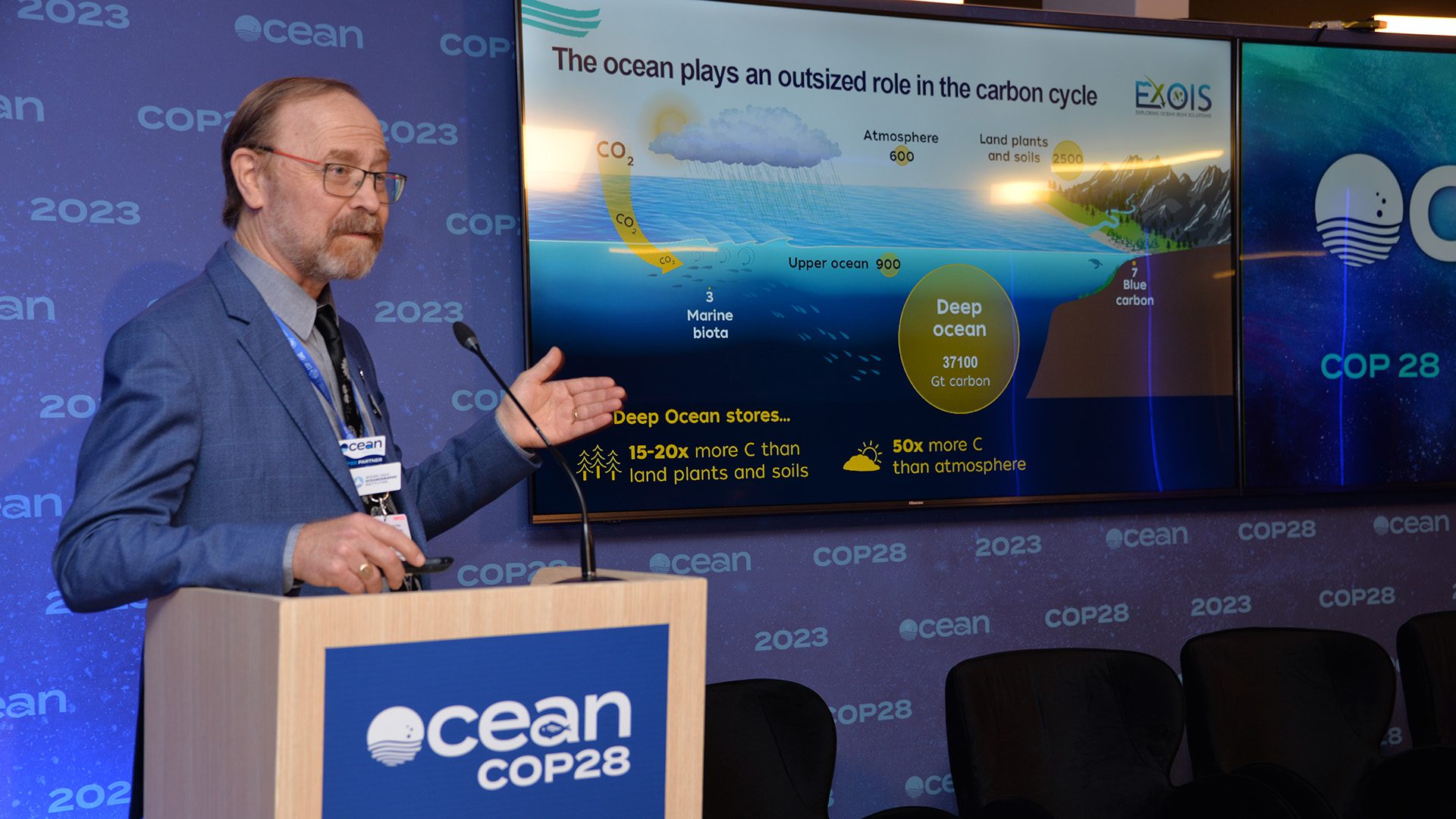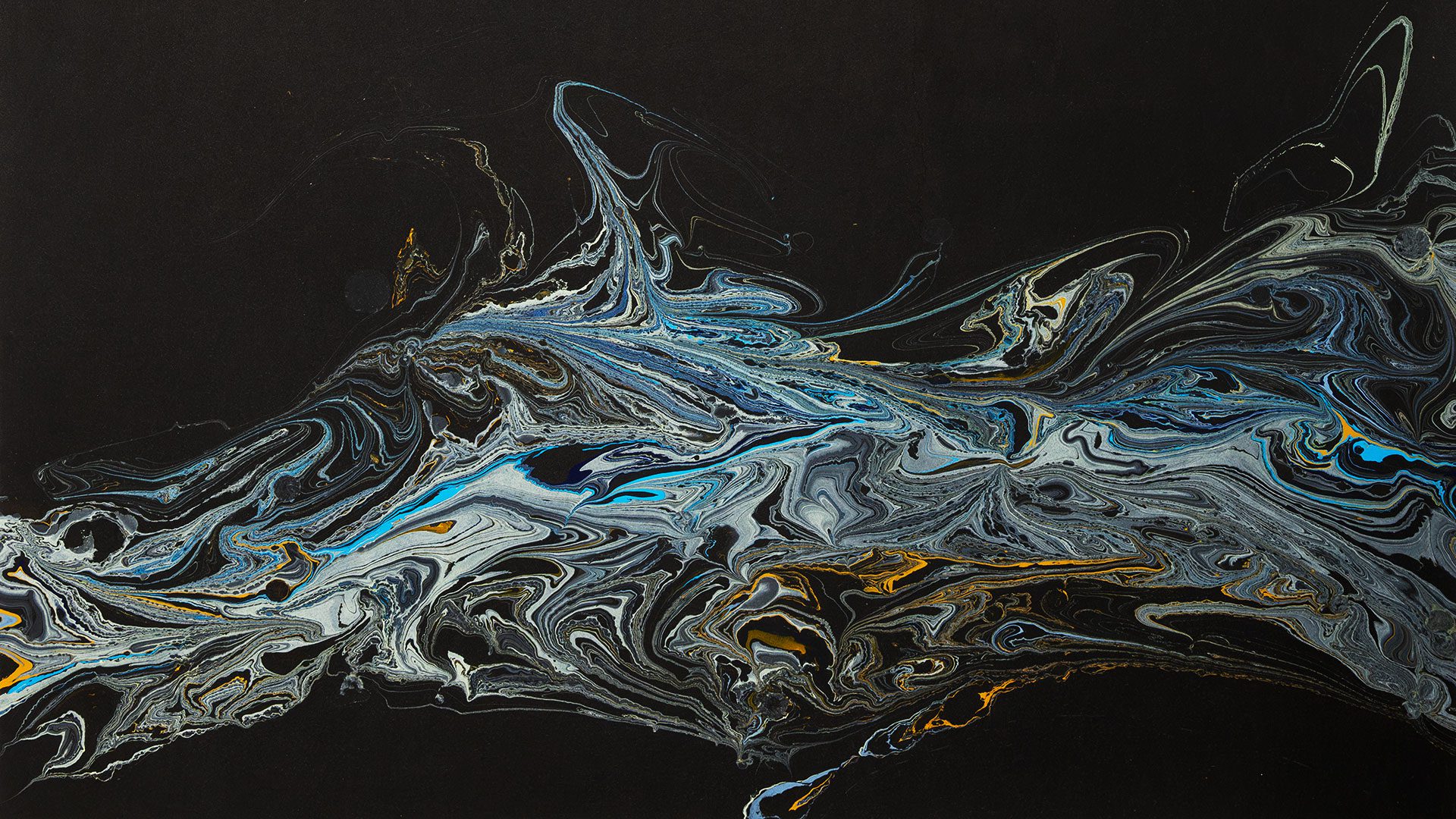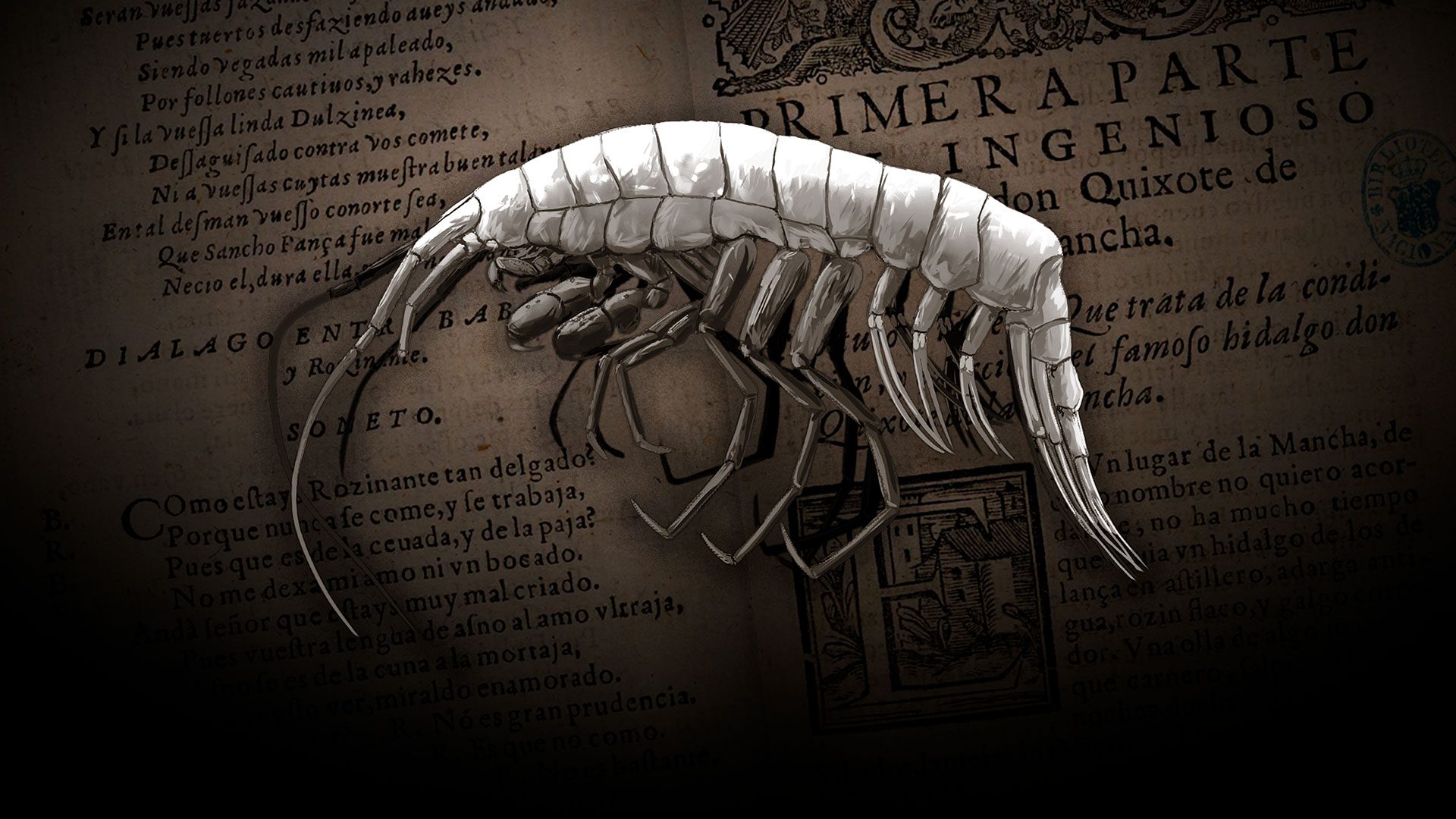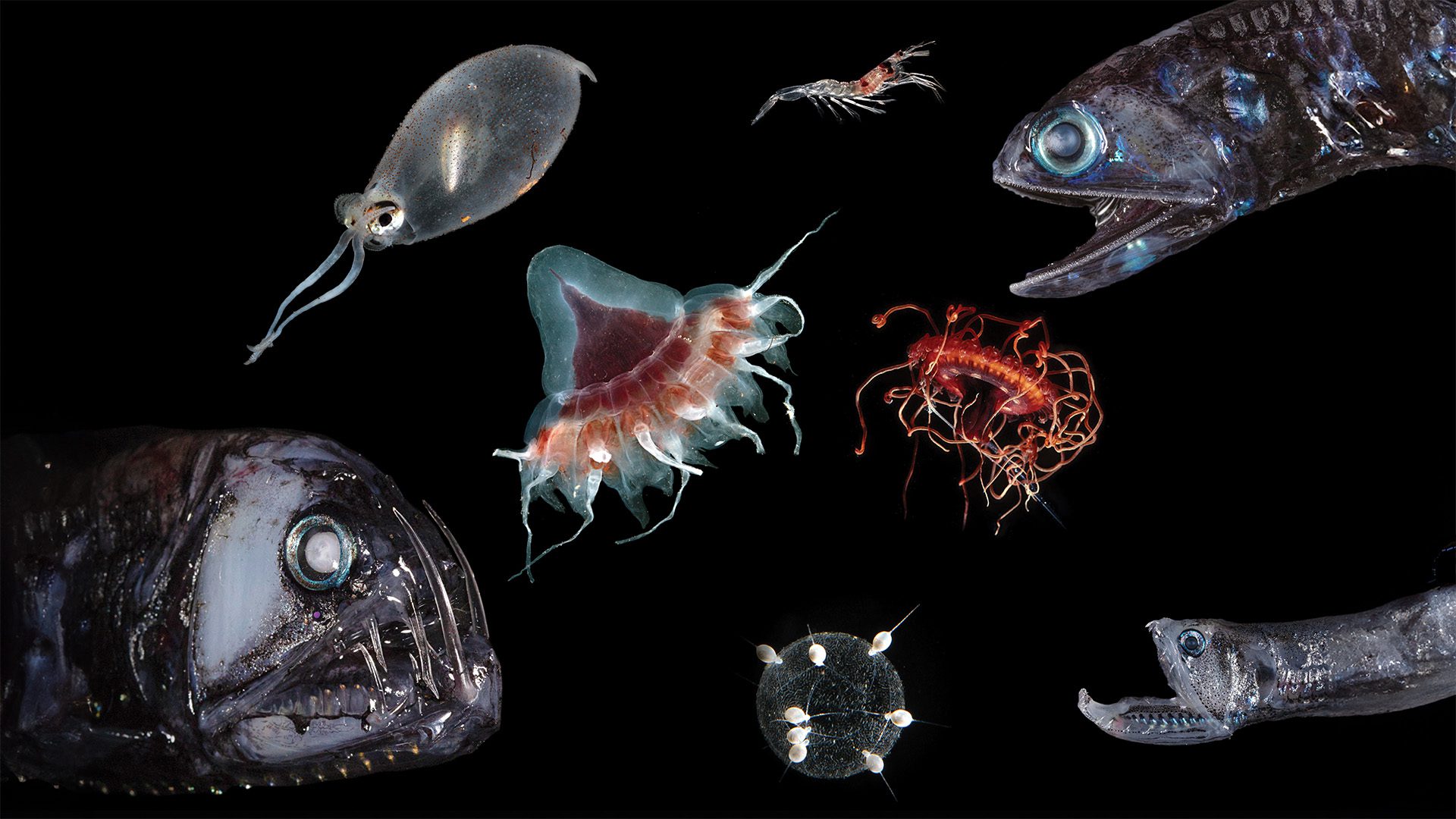
Five big discoveries from WHOI’s Ocean Twilight Zone Project
Six years since it began, WHOI’s Ocean Twilight Zone project brings new and exciting insights to bear
Estimated reading time: 7 minutes
Deep below the ocean surface, where sunlight almost disappears, the twilight zone abounds with life. From the tiniest microbes to the largest fish and everything in between, most of this shadowy world has long remained a mystery—but WHOI’s Ocean Twilight Zone (OTZ) Project is changing that.
Reaching from approximately 200 to 1,000 meters (656 to 3280 feet) below the surface and stretching across the global ocean, the twilight or mesopelagic zone lies out of reach of many traditional methods of data collection. This limits how easily—and how well—scientists can study its inhabitants. We have known about the abundant life in the ocean’s midwater since it was first detected by Navy sonar in World War II, and that many of its residents travel to and from surface waters to feed each night. Theirs is the largest migration on the planet, a continuous wave of motion that tracks the rising and setting of the sun. Yet we know very little about the creatures that undertake this remarkable journey.
WHOI researchers are wrapping up a six-year, multi-million-dollar project that began with an audacious goal: to revolutionize our understanding of the mesopelagic and the animals that live there. The OTZ Project has enabled ocean scientists and engineers to collaborate in new ways; to develop new technologies and approaches; to deploy them at sea in new combinations; and to collect huge amounts of new information—visual, acoustic, genetic, and more—to begin illuminating the mysteries that lurk at the heart of one of the world’s largest ecosystems.
Here are just five of the many discoveries WHOI’s OTZ Project team has made so far.
1. In the darkness, life follows the light
Life in the twilight zone is exquisitely attuned to light. Its inhabitants can detect subtle differences in light levels that the human eye would miss. Although scientists have long known that a wide variety of organisms live in the twilight zone, they assumed the animals were randomly distributed in relatively few layers throughout the water column.
The OTZ Project has revealed a much more nuanced picture. In fact, different organisms occupy many distinct layers, adjusting their position in the water column to maintain their desired level of light. Copepods occupy one layer, shrimp another, lanternfish another, and so on. As light levels change—at dawn, dusk, or when a cloud passes overhead—this highly structured ecosystem moves vertically to compensate.
This animation shows the daily movement of species from the ocean twilight zone to the surface waters to feed and back—the largest animal migration on earth. (Video by WHOI Creative Services, © Woods Hole Oceanographic Institution)
2. The twilight zone serves up a feast for big fish
Commercial fisheries catch tuna and swordfish near the surface, but these large ocean predators may depend on the twilight zone for as much as two-thirds of their diet. To arrive at this important new finding, OTZ Project researchers put satellite tags on large, commercially important fish to track their movements and behavior. In a separate study, researchers dissected and genetically analyzed the contents of their stomachs to find out what they were eating. The team discovered that these large predators spend far more time in the twilight zone than anyone had previously realized—and eat far more midwater fish. They may also dive into the twilight zone to escape their own predators, or to use the colder waters to adjust their body temperature or remove parasites.
These new data suggest that the expansion of commercial fishing into the twilight zone could deplete a critical food source for tuna, swordfish, and other commercially important fish—among other negative impacts.
3. The twilight zone has fish by the gazillions — but they may not make a good fishery
A 2014 study using shipboard acoustics in the Pacific Ocean suggested the global amount of fish biomass in the twilight zone was at least 10 billion tons—10 or more times previous estimates. To get a more detailed picture of life in the twilight zone, OTZ Project researchers used acoustic imaging at depth to generate fine-scale images of life in the midwaters. By combining these acoustic data with information from animals caught in nets, visualized in dozens-to-hundreds of images per second, and derived from the DNA they leave behind in the water, the researchers have begun to identify what kinds of organisms the acoustic signals are detecting—and better quantify their abundance. Their results from the northwest Atlantic Ocean indicate that twilight zone organisms are almost certainly less numerous than the 2014 study suggested.
In ongoing research, biologists on the OTZ Project team are examining the life-history traits of some of the most common twilight zone fish. By studying the fishes’ size, age, and number of eggs released, they will be able to help determine whether the species reproduce quickly enough to be sustainably harvested by commercial fishing. Although evidence is still under analysis, some of these fish live seven years or more, are slow-growing, and likely slow to reproduce. These characteristics—combined with the new information on their relative abundance—suggest they would make poor candidates for a future fishing industry.
4. For top predators, ocean eddies serve as superhighways to the twilight zone
Eddies—circular currents the size of a city—regularly develop in ocean waters around the globe. The oceanic equivalent of an atmospheric storm, eddies of warm water provide pathways for large ocean predators to reach the twilight zone. Sharks, tuna, and other fish use their environment to regulate body temperature, which limits their ability to tolerate cold water beyond. The relatively warmer temperatures at the center of warm-core eddies provide these “cold-blooded” predators with a cozy throughway to the twilight zone, allowing them to feed on abundant midwater prey at depths that would normally be too cold for them to access.
First of its kind mooring data on midwater biomass collected over the course of a year by the OTZ Project has revealed that these temporary ocean currents—lasting weeks to months—may be hotspots of life in the twilight zone. Data show as much as five times more animal biomass inside warm-core eddies than outside. Eddies, we now know, are essential to understanding the dynamics of ocean systems.
5. The depth to which carbon sinks depends on its source
The fate of carbon in the ocean depends heavily on biology—both in surface waters and in the twilight zone. At the ocean’s sunlit surface, carbon dioxide from the atmosphere diffuses into the ocean. Tiny, plant-like organisms known as phytoplankton take up this carbon to grow. Phytoplankton are consumed by tiny animals called zooplankton, which in turn are eaten by fish and other larger animals.
Much of the carbon in this food web stays near the surface and ultimately returns to the atmosphere. How much of it moves down into the twilight zone and beyond is highly variable and depends on which organisms are present near the surface.
Assume, for example, that the phytoplankton community is dominated by diatoms. These tiny creatures build glass “houses” from silica dissolved in the water around them—but they can quickly outgrow supplies. Unable to reproduce, they die off and rapidly sink, dragged to the depths by their heavy glass shells.
Similarly, gelatinous animals known as salps can boost the amount of carbon that gets through the twilight zone to the deep ocean. These small, transparent creatures act like “vacuums” in the water, scooping up smaller particles and creating large dense fecal pellets. When released, these pellets of poop can reach the ocean floor in a matter of days, effectively removing carbon from the atmosphere for hundreds or even thousands of years.
Science with a global impact
OTZ Project researchers are now in the final stages of analyzing the trove of new information it has collected, with more exciting discoveries sure to come. The team’s work has already made an impact on policymakers and the public, helping bring about a sea-change in understanding and awareness of the twilight zone and its crucial importance to ocean ecosystems and Earth’s climate.
One noteworthy example is the United Nations agreement on Marine Biodiversity of Areas Beyond National Jurisdiction (BBNJ), also known as the High Seas Treaty. Two decades in the making, this groundbreaking agreement will help to protect sensitive mid-ocean environments that are beyond the purview of any national authority—such as most of the twilight zone. By cultivating relationships with international policymakers and working to provide broad access to the best available science, the OTZ Project has helped ensure the twilight zone’s inclusion in policy discussions at the highest levels.
WHOI’s work in the twilight zone will doubtless continue to capture the public imagination and inform solutions to sustain this critical region of the ocean and the amazing life it supports.
